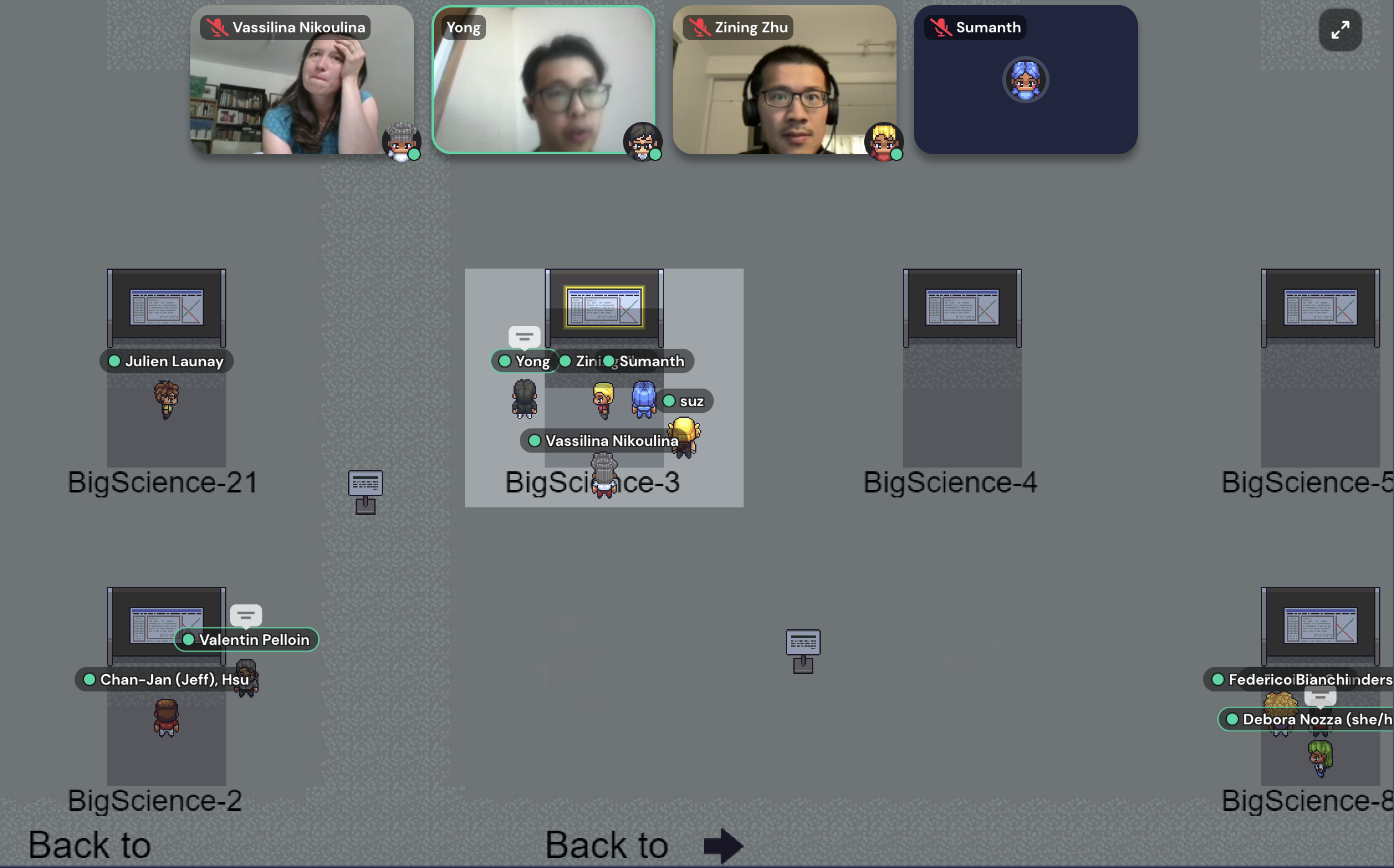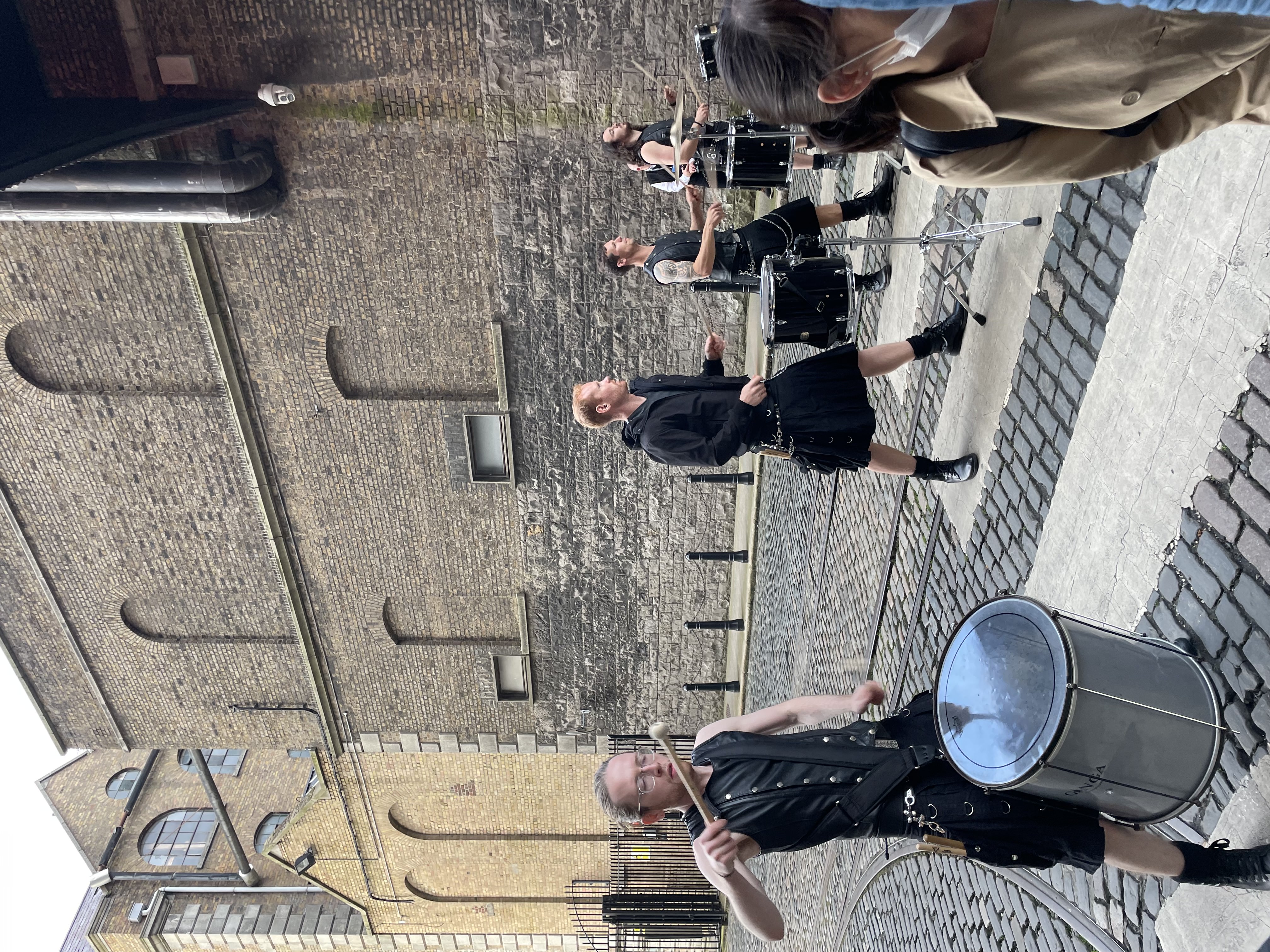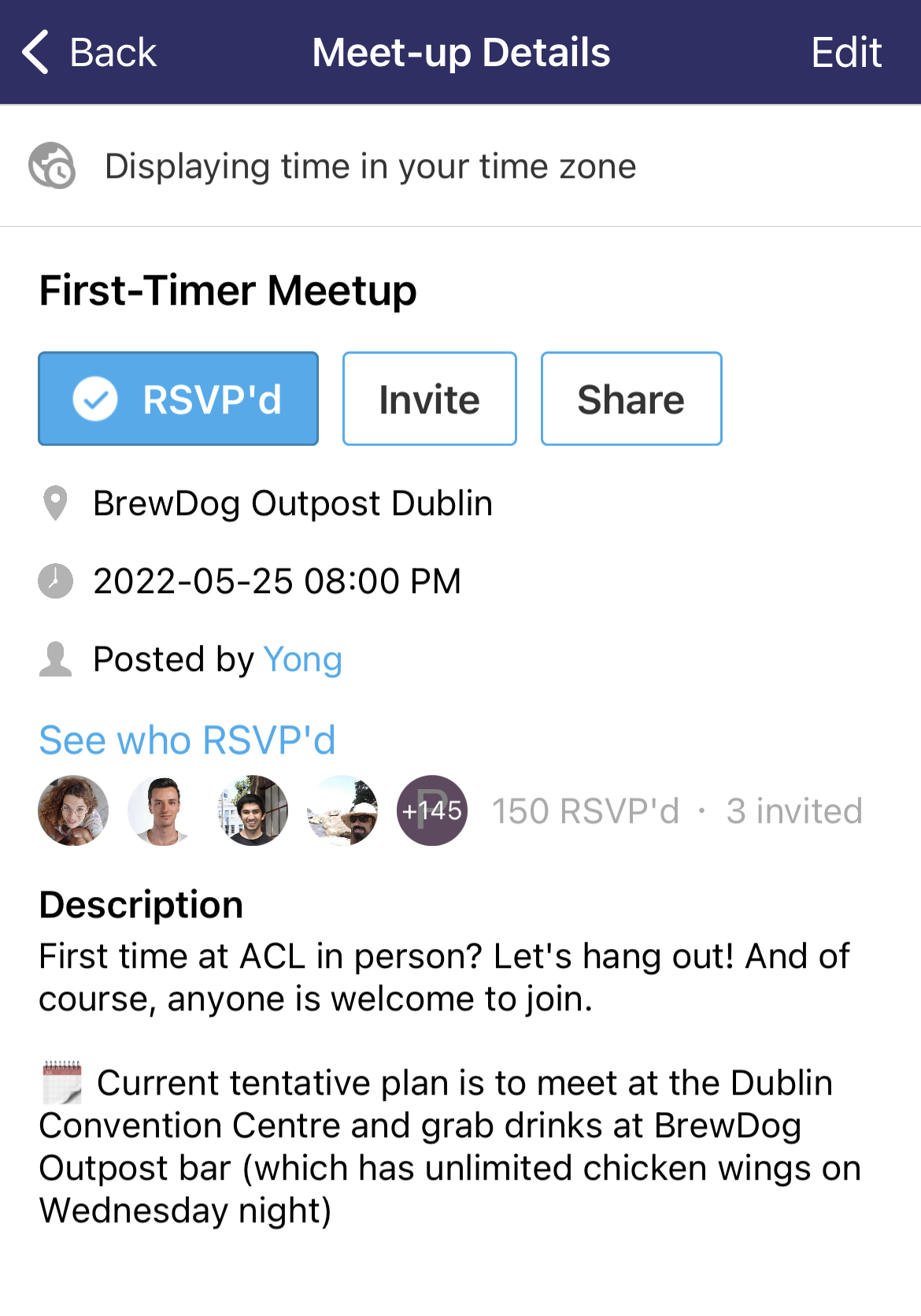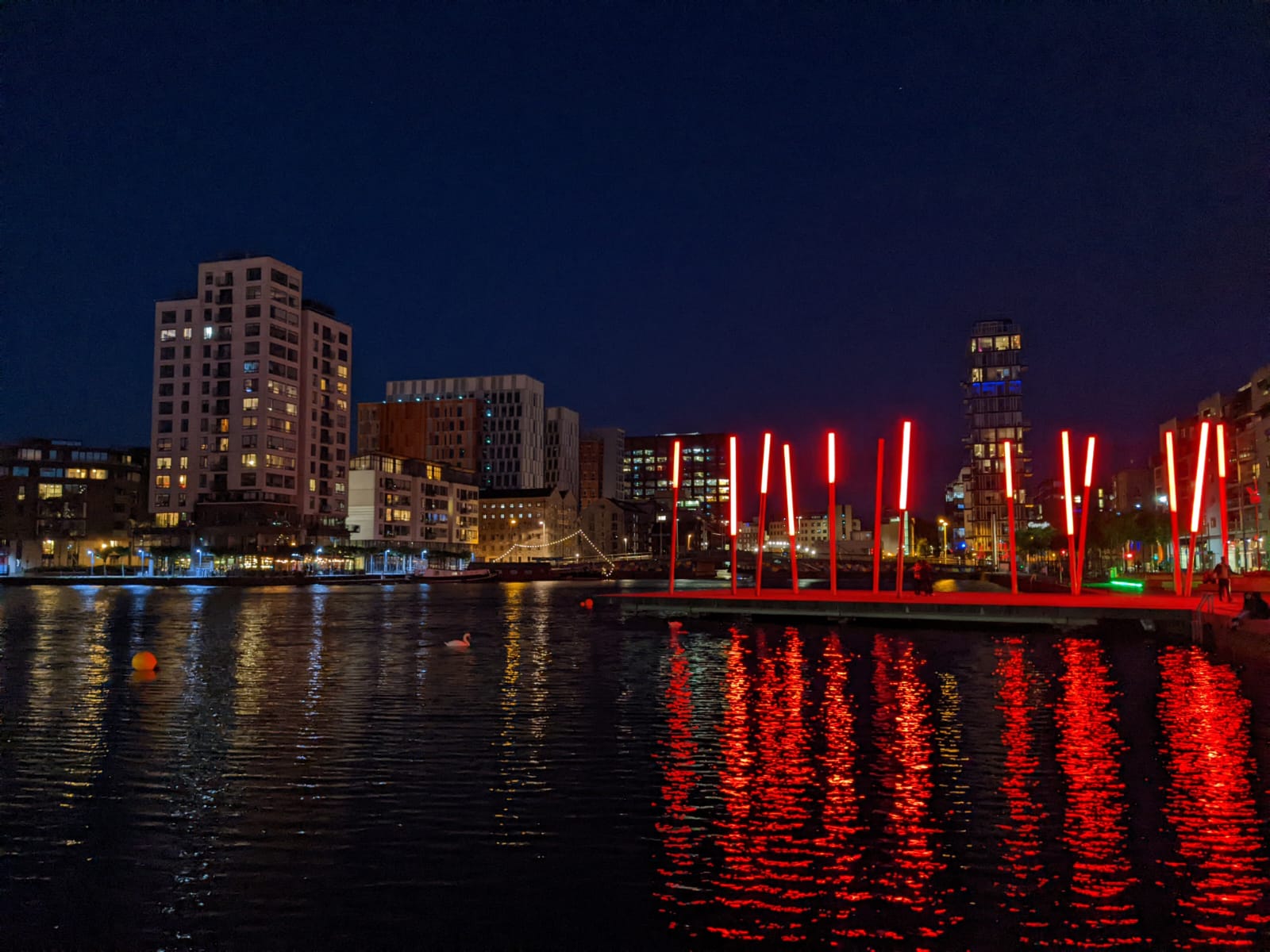My First In-Person NLP Conference: ACL 2022
ACL 2022 was less daunting and more exciting than I expected. In fact, after the one-week conference, I felt recharged! This post shares what I experienced at my biggest (so far) in-person NLP conference post-pandemic.
How I ended up in ACL in-person
Initially, I wasn’t planning to attend ACL in person. I held myself with a ridiculously unreasonable expectation: only attend ACL if I have a first-authored paper published in its main proceeding. This was my ego and Imposter’s syndrome talking, and I am really glad that I didn’t listen to them in the end. Another reason is that since my F1 visa has expired, if I were to leave the US, I would need to return to Malaysia afterward to renew the visa1.
I appreciate my advisor Steve persuading me to participate in this conference in person. Given that our involvement with BigScience has culminated in the PromptSource demo paper and a language adaptation workshop paper, and the requirement of the in-person demo presentation, we both agreed that it would be a great idea that I help out with the presentation and meet other BigScience folks in real life.
After making the decision, I rushed to book flight tickets and accommodation, which was a stressful process because there weren’t many options left. I also had to call embassies in Ireland and Malaysia to figure out how to return to the USA (due to COVID policies). To put things in context, ACL 2022 took place in late May, and I only started my travel arrangement at the start of May. Fortunately, as a Malaysian, I did not need any visa to visit the country.
Eventually, everything worked out in my favor. Even though I stayed at a hotel 30 minutes (by bus and train) away from the main venue, Dublin is a charming and accessible city. In hindsight, attending the conference in person was a great idea — I had a lot of learning opportunities, met with potential collaborators working on the same research problem, and enjoyed the company at the conference.
Main Event
My Presentations
I learned that it’s quite common for NLP conferences to start on Sunday. Usually, the tutorials take place on the first day, posters and talks from the second to the fourth day, and workshops on the last two days. I bring up about Sunday because we had to scramble to find a printing shop in Dublin as our in-person presentation (for the demo paper) is on Monday. Since most of them were closed on weekends, we emailed a print shop on Saturday, and my co-presenter Victor could barely retrieve the poster 30 minutes before our session.
For the demo presentation, it was more casual than I expected. We had a table, a monitor, and a few chairs. When people came, we walked them through the functionality of the PromptSource tool, and it’s great knowing that people were interested in using it to create prompts – they just were not sure how to use it with their custom datasets.
Demo booths in general were less crowded than I expected. Most people were hanging around the posters for the long and short papers. In my opinion, the conference should organize the demo presentations better. When we arrived, we fumbled for around 20 minutes (alongside the kind volunteers) in the hall to find our booth to finally realize that none of the demo presenters were assigned a designated booth number. Later on, I was even asked by some attendees whether the demo booths were a part of the job fairs 🥲.
 The PromptSource demo went super well! I was copresenting it with Victor (on the far left).
The PromptSource demo went super well! I was copresenting it with Victor (on the far left).
My second presentation on Friday was a virtual presentation at the BigScience workshop. Before the presentation, I saw a recent Tweet complaining about the virtual format of the presentation; combined with my friends’ disappointing accounts of the virtual format, I was concerned for the lack of interactions during the presentation. I actually looked forward to having meaningful discussions about multilingual NLP at ACL because there isn’t a huge emphasis on such research topics from where I am studying.
Fortunately, more people than expected showed up to the workshop2, and some were interested in the work of adapting BigScience open-source multilingual models to unseen languages. Vassilina (my co-author/co-presenter) and I were happy to know where to focus our efforts, what related research problems people are working on, and how our project plays into the big picture of multilingual NLP.
 My first virtual poster session went really well. We gained some insights on what research problems people care about.
My first virtual poster session went really well. We gained some insights on what research problems people care about.
Talks
Tutorials and panel talks are good avenues to understand the big picture. As a researcher in my early stage, oftentimes I find it difficult to understand why certain papers and concepts are significant for the field. Furthermore, the NLP field experiences an inundation of preprint papers in recent years. Tutorials help me navigate what experienced researchers identify as the important takeaways and future research trends. For instance, after attending the tutorial “Zero- and Few-Shot NLP with Pretrained Language Models”, I learned about how the community should perceive the release of new model designs for zero-shot learning by taking into considerations of the trade-offs between compute and performance3 and how important dataset design –- an overlooked aspect until now –- is for prompting language models.
I also learn to connect general concepts to narrowly focused research topics. For instance, the tutorial “Learning with Limited Text Data” taught me that many semi-supervised learning techniques are different forms of regularization (i.e., consistency regularization, entropy regularization, etc.) The panel discussion on “2082: An ACL Odyssey: The Dark Matter of Intelligence and Language” by Yejin furthers my understanding of the importance of noise in machine learning. As a researcher working on noise-aware training, I learned that researchers should also account for noise in evaluation data.4
On a side note, I actually attended a tutorial that I had to leave early because the tutorial became too technical, and due to my unfamiliarity with some fundamental concepts in that field, it was too difficult for me to catch up. After a certain point, I lost the big picture of research problems. My arriving 10 minutes late to the tutorial did not help either. In other words, it is challenging to engage the audience when the speaker uses a chronological manner to distill important findings on the low level.
Posters
The in-person poster sessions were terrific! I like that ACL 2022 divided poster sessions according to topics, so it was very effortless to understand what everyone was working on. It was hard to ignore prompting when everyone physically around you were talking about it, ranging from the interprability perspective to new methodologies for claiming the title of SOTA. As I was also recently working on research about prompting language models, I wanted to summarize my emotions with what my advisor had said: “Weird to be on trend. I am not used to it 😅.”
There was ample time for learning everyone’s research topics. As the audience, we just went around each poster booth, asked the presenter about what they worked on, and took photos of the posters if we wanted to follow up or remember them. Some good questions that did me wonder were:
- “What’s the most surprising findings you have gained from the experiments? Why?”
- “What’s your follow-up work on? If somebody wants to build on top of your work and collaborate with you, what do you think they should work on?”
 Poster sessions at ACL 2022. Usually there were around 80 posters presented at once.
Poster sessions at ACL 2022. Usually there were around 80 posters presented at once.
Job Fairs
Ah, the freebies! (Just kidding, but some merchs are really good!)
Many companies who sponsored the ACL event set up booths so people who wanted to learn more about opportunities could come forth. This is one of the best opportunities to know what research problems the companies are working on and what they are actively hiring people for. For instance, before coming to ACL, I didn’t realize what CohereAI is working on; after talking to Adrien, I learned that its immediate vision is to be the best company to offer text classification service through specialized embeddings and language model generation.
It is actually great to know the gap between what the research community cares about and what industry cares about. My biggest highlight from the conversations at the job fairs was the fundamental need for better multilingual NLP models. To quote Adrien from CohereAI, “if a model performs as well as a human on some tasks, we probably can hire the person for the task. However, we cannot expect the person to speak 20 languages (therefore, we need to rely on multilingual models).” This is the first time I heard the argument for why multilingual NLP is important for the industry being put that succintly.5
Meeting People
Hang-outs
Before coming to ACL, my friend suggested to me to have meals with different groups of people every day. I found it easier than expected because there were many small talk opportunities, and people were friendly. For instance, when people were taking the escalators down to grab lunch, I simply turned my head around and asked if people behind me had any lunch or dinner plans and if I could join them. It had so far 100% success rate to the point I think I invited myself into some gatherings where I didn’t think I should be in 😅.
ACL organized a tour to the Guinness Storehouse, which is usually referred to as the home of Guinness. We were served free beers and various delicacies there, and the organizers even prepared an Irish music performance for us before the tour. Many people gathered at the Gravity Bar on top of the Storehouse, which offers a 360 panoramic view of Dublin.
 Irish music performance outside the Guinness Storehouse.
Irish music performance outside the Guinness Storehouse.
Many people also used some days (mainly the workshop days) during the conference to explore Dublin. It was well-received when I proposed to people with whom I had shared meals to check out some parks or some touristy destinations together. My point is that hanging out in a professional conference doesn’t need to take place over coffee, meals or drinks.
In general, I was happy to meet renowned researchers who have inspired me, potential collaborators who are working on the same research problem as I am, and other students whom I think would meet again in future conferences. I also got to meet BigScience researchers in person for the first time!
Whova
Whova is basically Meetup combined with Slack, but tailored for conferences. You can check the schedule for talks, organize social activities, and even reach out to people through direct messages (for instance, one use case is to follow up with the presenters offline).
Whova is a very effective tool for social hang-outs. Many people use Whova to organize activities around hobbies such as running and bouldering. Some even used it to find companions and figure out their travel plans for Dublin.
 I used Whova to organize a first-timer meetup for people who attended ACL 2022 for their first time, so we could all get to know each other. Also, who doesn’t like a fun Wednesday evening hangout?
I used Whova to organize a first-timer meetup for people who attended ACL 2022 for their first time, so we could all get to know each other. Also, who doesn’t like a fun Wednesday evening hangout?
Volunteering
Volunteering is an excellent way to meet other students. Many volunteers (if not all) were students or early-stage researchers who used the opportunity to waive registration fees. Most responsibilities were simple; for instance, being a receptionist on the third day of the conference means chilling at the desk with very few people coming to you.
I mainly helped out with poster supervision. I guided presenters to their booths before the start of the session and escorted them out after the session ended. Even though on paper, I was volunteering for five hours straight, I had a lot of free time roaming around the poster booths and talking to presenters because my duties only took place before and after the session.
One thing I wished was that ACL provided lunch for volunteers. Some people volunteered from 8am to 12:30pm and from 1pm to 5:30pm, and the thirty-minute break in between the sessions was not sufficient for a full meal. Furthermore, there were not a lot of restaurant options around the venue within walking distance.
Closing Thoughts and Random Tips
It’s so refreshing to see people from all around the world, such as Israel, India, Brazil, and Singapore, gather at the same place after two years of the pandemic. Nonetheless, we still need more work on diversity as I noticed that males usually outnumbered females by multiple factors at meal gatherings.
Jet lag can be a b****. Five hours of hour differences, in addition to my terrible sleeping habit, were a nightmare to me, and arriving only one day before the conference was not helping. Later on, I came across this very helpful guide on how competitive gamers overcome jet lag. They use simple heuristics to adjust circadian rhythms before their travel. This is super handy for my future conference trips.
It may also be a great idea to print the poster beforehand. If you were worried about the poster being ruined from the travel, fabric posters might come to your rescue. If it is too expensive, consider arriving on weekdays so you can retrieve the poster earlier from the local print shops and avoid the hassle. You also get to have one more day to mitigate the jet lag!
This tip is for those who want to network further with the personnel or researchers from a particular company. You can ask the company in its job fair booth if it is organizing any evening networking event (or party) in person. They usually have a cap on the maximum amount of people joining, and I only learned about this at the very end of the conference, so I didn’t attend any.
Finally, conferences are supposed to be fun. Attend talks that are interesting to you, hang out with people whom you think you vibe with, and share the surprising insights you have gained from your research with your peers (remember, they are there to learn more about your work.) Feel free to take long breaks and roam around the city to recharge if you are tired. It’s best to feel motivated after the week-long conference, not drained.

I didn’t plan to do so until the end of August. ↩
Initially, some people couldn’t even join the session on gather.town because we reached the maximum capacity. The organization had to increase the capacity to accommodate more people. ↩
Forming this insight alone usually requires thorough reading and following up on many papers published in the field, which I cannot achieve as an early researcher. ↩
The sources of noise may be different for training and evaluation data. In training data, noise can come from weak supervision, whereas in evaluation data, noise comes from ambiguity in interpreting the inputs. ↩
I understand that multilingual NLP is important, but when most people I speak to in the past are actively working on or using English models, the availability bias tends to make me undermine its importance. ↩
